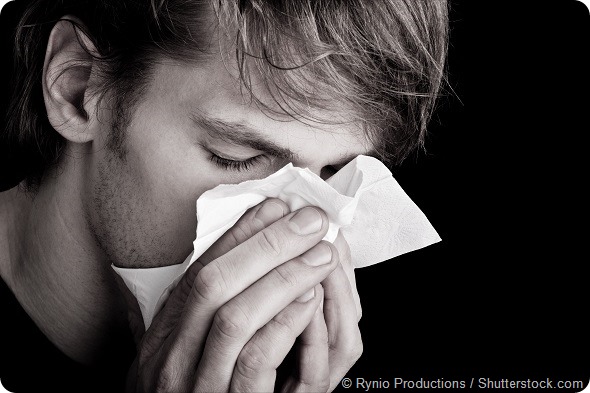The threat of antibiotic resistance is very real. It is estimated that 700,000 people die each from resistant infections. In Europe the figure is 25,000 deaths and a similar number in the USA.
In countries such as India, up to 50% of Intensive Care Units contain antibiotic resistant bacteria. Antibiotic resistant infections in India cause nearly 10,000 infant deaths at birth and the figure is increasing.
The ease of global travel means that antibiotic resistant bacteria can be very quickly transmitted across the globe.
How soon could we begin to feel the impact of antibiotics losing their power if action is not taken?
If we don’t act now, then in 7-10 years, the incidence of antibiotic resistant infections will increase very significantly. According to Lord O’Neill by 2050, chair of the Antimicrobial Review there could be up to 10 million deaths each year with a massive cost to the global economy.
The UK Prime Minister has described the issue as potentially leading medicine back to the dark ages. The Chief Medical Officer, Dame Sally Davies, highlighted the antibiotic resistance threat some three years ago and argued that the threat was equal to that of terrorism.
In a recent BBC Panorama Programme entitled ‘The Antibiotic Apocalypse’ she concluded the programme by saying that we will be betraying our grandchildren if we fail to tackle this problem now.

Could you please explain how bacteria become resistant to antibiotics?
Bacteria become resistant to antibiotics in a multitude of ways. They have been able to evolve to fight off harmful toxins which they have been exposed to over billions of years.
These adaptive mechanisms include blocking the penetration of the antibiotic, pumping it out as soon as it gets in, modifying the protein which the antibiotic targets so that the antibiotic is no longer sensitive e.g. methicillin resistant Staphylococcus aureus (MRSA). Bacteria can transfer resistance genes amongst one another very easily.
Why is it important not to use antibiotics when you don’t need them?
Antibiotics should only be used if they are absolutely necessary. It has been estimated that as many as half the antibiotic prescriptions prescribed by GPs are unwarranted. Antibiotics are only effective for bacterial infections and yet patients ask their doctors for an antibiotic course for a common cold.
A programme of education needs to be implemented both for professionals and the public. NICE has recently made an announcement about the over prescribing of antibiotics by doctors. Each medical practice and hospital needs to put in place an antibiotic stewardship committee that is responsible for good antibiotic prescribing practice. Doctors who don’t follow the practices antibiotic prescribing rules should be closely questioned as to their reasons.
Why don’t antibiotics work for all infections and how can healthcare professionals determine whether an antibiotic is needed?
Many infections that people get are viral infections with the common cold being the most obvious example. Viral infections are not affected by antibiotics which leads to mis-prescribing.
One of the biggest gaps is how to long it takes to ascertain what type of infection a patient has. While there are a number of new diagnostic tests often based on DNA sequencing methods, these are expensive and still not routinely used in hospital diagnostic labs.
The recent Longitude prize of £10 million was voted by members of the public to be spent on developing diagnostics which can detect antibiotic resistant bacteria in the doctor’s surgery or at the bedside.
If you have green phlegm, do you definitely need antibiotics?
No.

Why should you not share antibiotics with another person or keep leftovers for another illness?
These are very dangerous practices. There is a direct link between the misuse of antibiotics and antibiotic resistant infections.
One of the reasons that antibiotic resistance rates are so high in countries like India or Mexico is that people can buy antibiotics without a prescription.
In any course of antibiotic treatment, there should be no left overs. The prescribed course must be taken according to the doctor’s instructions and must be completed.
What are the main myths about antibiotics and resistance that you would like to dispel?
- The public need to realise that when one talks about antibiotic resistance, it is not the individual that becomes resistant to the antibiotic but the bacteria.
- Antibiotics are a precious resource and should not be misused – always follow the label instructions.
- Gram-negative bacteria pose the greatest threat
- We cannot delay tackling the problem as it can take 15-20 years to find a new antibiotic and we don’t have 15-20 years.
Where can readers find more information?
Much more information about antibiotic resistance and how one UK charity is tackling the problem can be found at www.antibioticresearch.org.uk
About Professor Colin Garner
Professor Colin Garner is the Founder and Chief Executive of Antibiotic Research UK, the world’s first charity developing antibiotics against antibiotic resistant infections.
Professor Garner is a pharmacologist / toxicologist who spent his research career mainly at the University of York where is an Honorary Professor in Pharmacology. He has published over 250 peer reviewed scientific papers, edited three books and written over 35 book chapters.
He founded the journal Carcinogenesis and has sat on numerous national and international panels. He founded Antibiotic Research UK along with some of UK’s experts in antibiotic resistance because they felt that not enough research focus and funding were being devoted to this area.